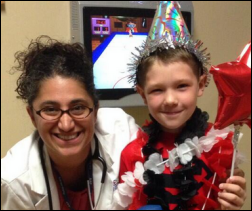Bill Corsten is president, North America of Agfa HealthCare.

Tell me about yourself and the company.
I’ve been at Agfa HealthCare since September of 2014, but I’ve been in healthcare IT for just over 20 years, about half of that at McKesson Corporation. I grew up in sales and sales leadership and I still love it, quite honestly, but right now I find myself more motivated by the operational and cultural challenges of running a business like Agfa HealthCare.
This is an old company. We’ve been in business for 150 years and in healthcare since the 1940s. That’s a long and meaningful history because of a commitment to innovation. If you look at the evolution of the company, we’ve been able to maintain a market-leading position in our two primary businesses of medical imaging IT and x-ray technologies.
How is imaging changing with the push for value-based care and care coordination?
When people think imaging, I suppose they think traditional radiology and cardiology, the birthplace of medical imaging. Our more successful customers are taking advantage of the power of medical imaging throughout the hospital and beyond the four walls of that hospital. We’ve got customers who are using it, distributing it, or viewing in upwards of 35 and 40 different departments, so it has gone beyond radiology and cardiology.
Medical imaging in that expanded use can have a tremendous impact on patient care. No medical record is complete without clinical data, medical imaging data, and of course content document management data. There’s still a lot of paper in hospitals these days. We believe we’re completing the medical record and making it better for patients who are our ultimate customers or consumers of healthcare, making it easier for our hospital customers to deliver care more efficiently and effectively for our consumers.
Imaging contains the image itself as well as any clinical commentary or analysis that has been added. What’s the best value case for each of those?
It’s evolving. It’s getting there, but we’ve still got a way to go. If you look over the last decade at the importance of the electronic medical record and the Affordable Care Act’s impact on adoption, it did leave a gap in completing that story. It is really over the last couple of years that we’re seeing the adoption of enterprise imaging and the expansion and the use of that.
If you’re a patient, if you’re a care provider, if you’re a referring physician, to have that picture go along with the words is really completing the story of the patient. It’s not until you have that full story we believe can you make a comprehensive diagnosis and care plan for that patient.
Does imaging have a population health or research component?
Absolutely. Is Agfa HealthCare a population health management primary company? No. Do we participate in that space and are we going to be a key component to an overall solution? Absolutely.
With respect to medical images themselves and the use or data mining of those images, there are use cases where we can look at historic studies. For example, lung nodules, if we’ve got a patient that presents with a lung nodule, a physician may look at that and make a determination — based on the size, based on how long that nodule’s been present — to either act or not to act. To incur that expense and that patient experience or not.
If we can roll forward and have that volume of data or those studies and put together trends, we could use this predictively to make sure we’re making proactive recommendations or not based on like studies that have been stored over time at a particular institution or across the industry itself.
Patients still complain that new providers don’t have access to their previously taken images. Are we making progress on sharing them?
That is the power of our platform. On a single platform, it’s consolidating all of the image data from multiple service lines. It could be from multiple PACS, multiple departments inside the hospital, and outside in a secure manner, which gives access to patients. Lets them see their medical images. It could be providers who are giving the care and it could be the referring physician. Anytime, anywhere. It is absolutely enabling and perpetuating that medical image regardless of proprietary specifics.
How would I as an office-based physician best gain access to a health system’s images of my patient?
Historically you would have CDs. A patient would leave a hospital with a CD, or going way back to the film days, a big manila envelope. What happens to those CDs? They get misplaced or a patient forgets to bring the CD to the referring physician’s office. Then you either lose the time with that physician or that patient doesn’t get the care that they need at the time, it could result in reprinting or populating of that CD.
With the technology that Agfa brings, there is exchange and distribution of that image from the single platform where it was captured. Then there’s viewing capabilities by anybody who participates in that image chain or in that image experience. If I’m a patient or if I’m a referring physician, through the technologies — over and above the original capture of that image — they’re able to distribute and or view that image, taking advantage of eliminating the need for film or CDs.
What is the state and the future state of integrating images with EHRs?
There’s a reason that the big EHR vendors don’t necessarily label themselves as experts in medical imaging. It’s difficult, it’s complex, it’s vast, and it’s a critical component of the legal medical record.
To put our industry in a position where we can take advantage of a single EHR integration across departments, regardless of where they exist, and to connect that to the patient’s medical records so as to bring it all together, it’s only going to make it a better experience, more efficient, more economical. There’s going to be lower total cost of ownership with respect to the number of disparate systems that you’re having to maintain. It will facilitate the flow in the way the physician wants to experience it or the way the patient wants to experience it. That is what is driving our development efforts and our integration efforts when it comes to playing with some of the larger EHR vendors in North America.
What are people doing with VNAs beyond just storing DICOM images?
I come from the EMR industry with 10 years at McKesson. The parallel between then, the clinical data repository and the Web portal or physician portal viewer, and today’s VNA and the viewer … much of our competition had gotten a head start on that and we let them run. We gave them that head start because we took a more holistic approach to this. We wanted to deliver a full solution that was not simply about a repository and a viewer, but it was about the capture and the distribution of those DICOM images to all caregivers, patients, and referring physicians across all settings of care. We took a little different approach to it.
There is non-DICOM imaging. It is a major component. Agfa Healthcare has a very successfully deployed an enterprise content management system in our European customer base that we are now considering bringing to North America. Not for the benefit of competing nose-to-nose with those existing vendors in that space, but actually taking the enterprise imaging and document management and bringing them together so that one and one becomes three for our customers. We’re able to bring that workflow. We’re able to bring the advantages of having non-DICOM and DICOM images managed by the same vendor and distributed into the workflow of our care providers and other caregivers in a seamless and efficient way. That is something that we’re investigating quite seriously.
It’s been said that no doctor wants a physician portal. Is it a challenge to go beyond pull-type systems to pushing the new information automatically to the systems in which the provider works all day?
It can be. You’re right — patient and physician portals have been in the industry for 15 to 20 years. Agfa’s approach to this functionality is different, where we are utilizing it in a use case scenario or problem-solving opportunities as it relates to our enterprise imaging application. We’ve got a portal solution that we are marketing to make it easier for our patients to experience the care provided by their community hospital or their integrated delivery network. We are doing it on a problem-solving approach.
Rather than say we’ve got a physician portal or a patient portal that is to replace the legacy systems that are out there, we are integrating it deeply into our solution so it becomes a seamless component to that experience, whether you’re a care provider or a patient. You’re right — pushing that information is more important than pulling that information. We’re making sure that, much like we have in the development of our core solutions, the information is where they need it and it’s in the hands of the right person on that image chain at the right time.
Where do you see the future of imaging as it relates to medical informatics?
The opportunity is only going to get bigger. The opportunity is for those vendors who are in this for the right reasons, with the right vision, and not trying to isolate themselves but rather to avail themselves to the greater good, which our ultimate patient, the ultimate consumer. Those that recognize interoperability is a must and that we are not going to be all things for all people.
But I absolutely firmly believe that medical imaging, enterprise imaging in the manner that we’re espousing, is going to be a critical component in our delivery of healthcare, whether you look at the development of population health solutions and the participation in HIEs or if you look at a small community hospital. They are the HIE, if you think about it. In their community, they’re everything to their patients.
It’s how we choose to work with our customers to align to their outcomes. That’s going to make the difference and those are the vendors that are going to survive, those vendors that are driving the patient outcomes, driving our customers’ outcomes, and letting those outcomes drive our R&D. That will drive our direction as we look to develop our place in the marketplace.
Comments Off on HIStalk Interviews Bill Corsten, President, Agfa HealthCare






























































Merry Christmas and a Happy New Year to the HIStalk crowd. I wish you the joys of the season!